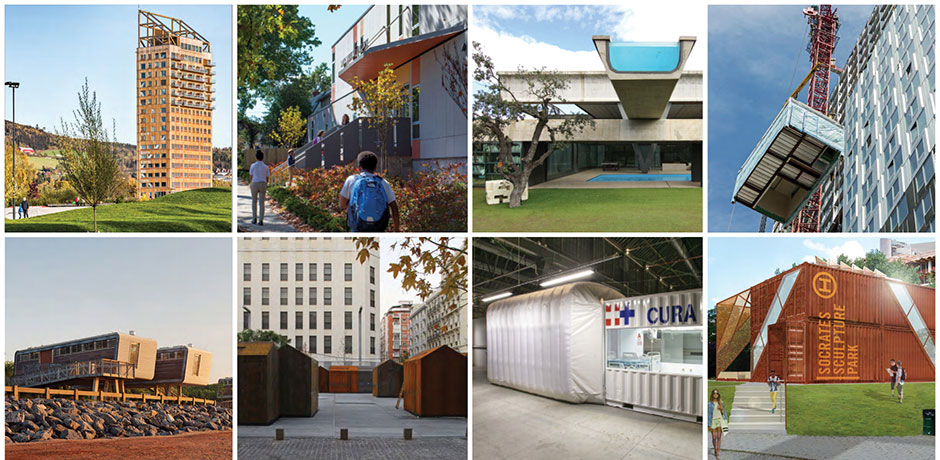
 Public Design Commission311
Public Design Commission311 Search all NYC.gov websites
Search all NYC.gov websites
Prefabrication

As with other densely populated and expanding urban metropolises, New York City is exploring unconventional methods of designing and constructing to meet growing needs for public infrastructure while also addressing pressures to reduce costs. As a result, prefabricated, modular, and flatpack methods of construction are being explored as alternatives to traditional construction methods across the city.
To inform the design and review of projects utilizing these methods, PDC embarked on a research partnership with Columbia University’s Graduate School of Architecture, Planning, and Preservation (GSAPP) to gather case studies of current best-practices for prefabrication, and to analyze both the technical and logistical nuances of these systems in order to understand their implications and viability in New York City.
A departure from other discourse on prefabrication, this body of research looks to small-scale urban infrastructure and dwelling prototypes that are woven into the public realm, and is intended to inspire adaptable and economical design excellence within prefabrication practices both citywide and globally.
Designing New York: Prefabrication in the Public Realm
Designing New York: Prefabrication in the Public Realm examines how prefabrication practices can be applied to small-scale urban infrastructure projects to have a large public-realm impact.
The document was originally initiated as a seminar at Columbia University GSAPP entitled Prefab, Modular, and Flatpack, which examined the history of exemplary prefabrication processes and projects to-date, and focused specifically on recent developments that have evolved in the last ten years, building upon the 2008 MoMA exhibition and publication Home Delivery: Fabricating the Modern Dwelling, curated by Barry Bergdoll and Peter Christensen.
The seminar concluded with a roundtable discussion at the Center for Architecture in July 2019, where a panel of interdisciplinary and cross- sector professionals discussed student findings and further probed issues related to design and procurement, engineering and construction management, and site selection and transport logistics unique to New York City. Video coverage of the event can be found here.
Following the seminar and roundtable discussion, research materials and findings were further developed by GSAPP students, and a number of key projects were selected as case studies for inclusion in this document. Amidst the global COVID-19 pandemic, additional public health and pandemic relief projects have also be added.
The hope is that this body of research can be a living document and continue to grow with the ever-evolving conversations surrounding prefabrication practices. The long-term goal is to give public agencies, designers, developers, and the community at-large, tools to incorporate and advocate for economical and quality comprehensive approaches to prefabrication across a diverse set of programs and typologies.
The Public Design Commission would like to thank Columbia University for their generous support toward this publication, and the American Institute of Architects New York Technology Committee for their generous support towards furthering this research and facilitating the July 2019 roundtable.
Related Events:
-
Prefabrication in the Public Realm, 2021 Virtual Discussion
Virtual Event
-
Prefabrication in the Public Realm, Roundtable Discussion
Center for Architecture


